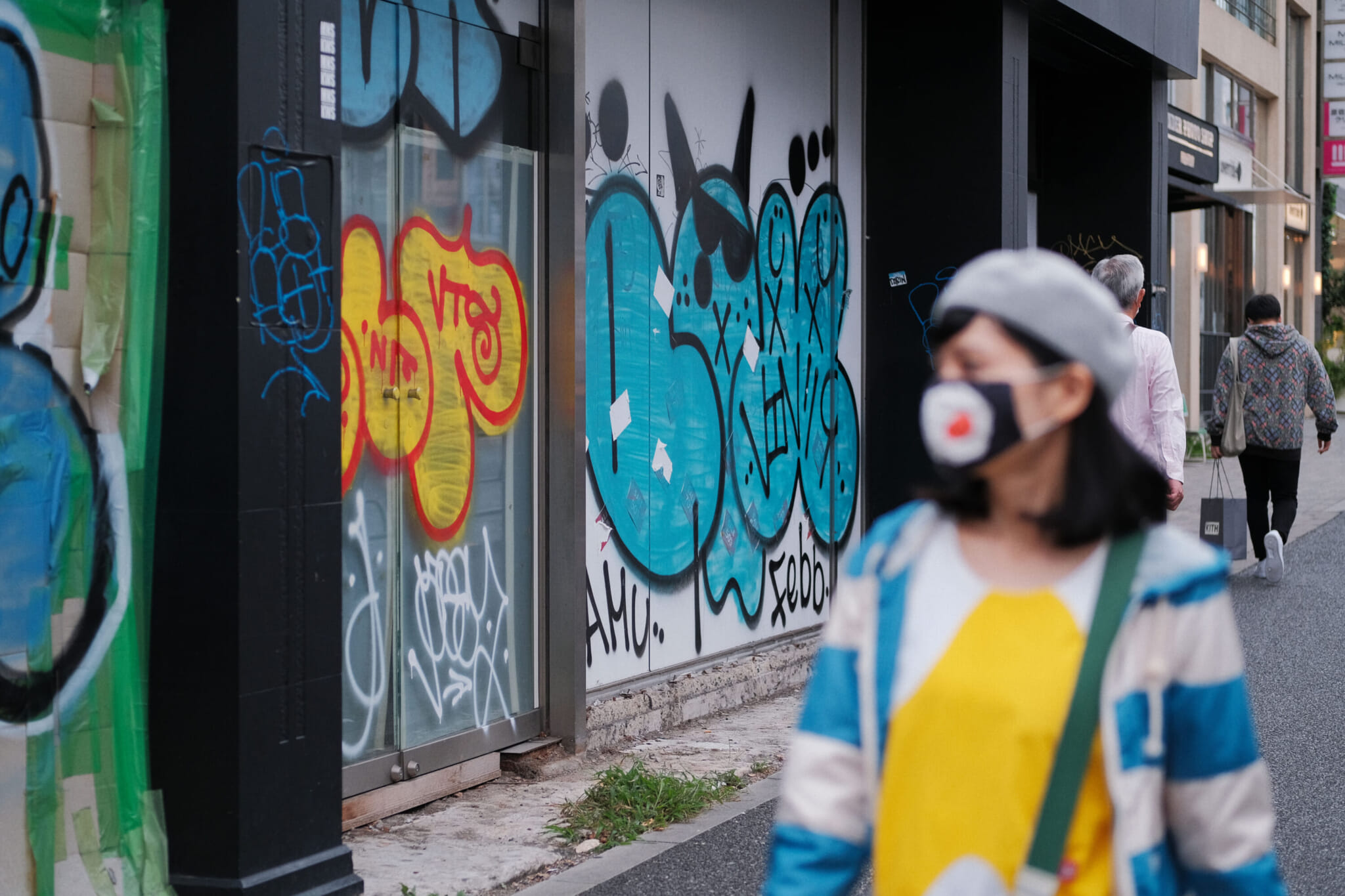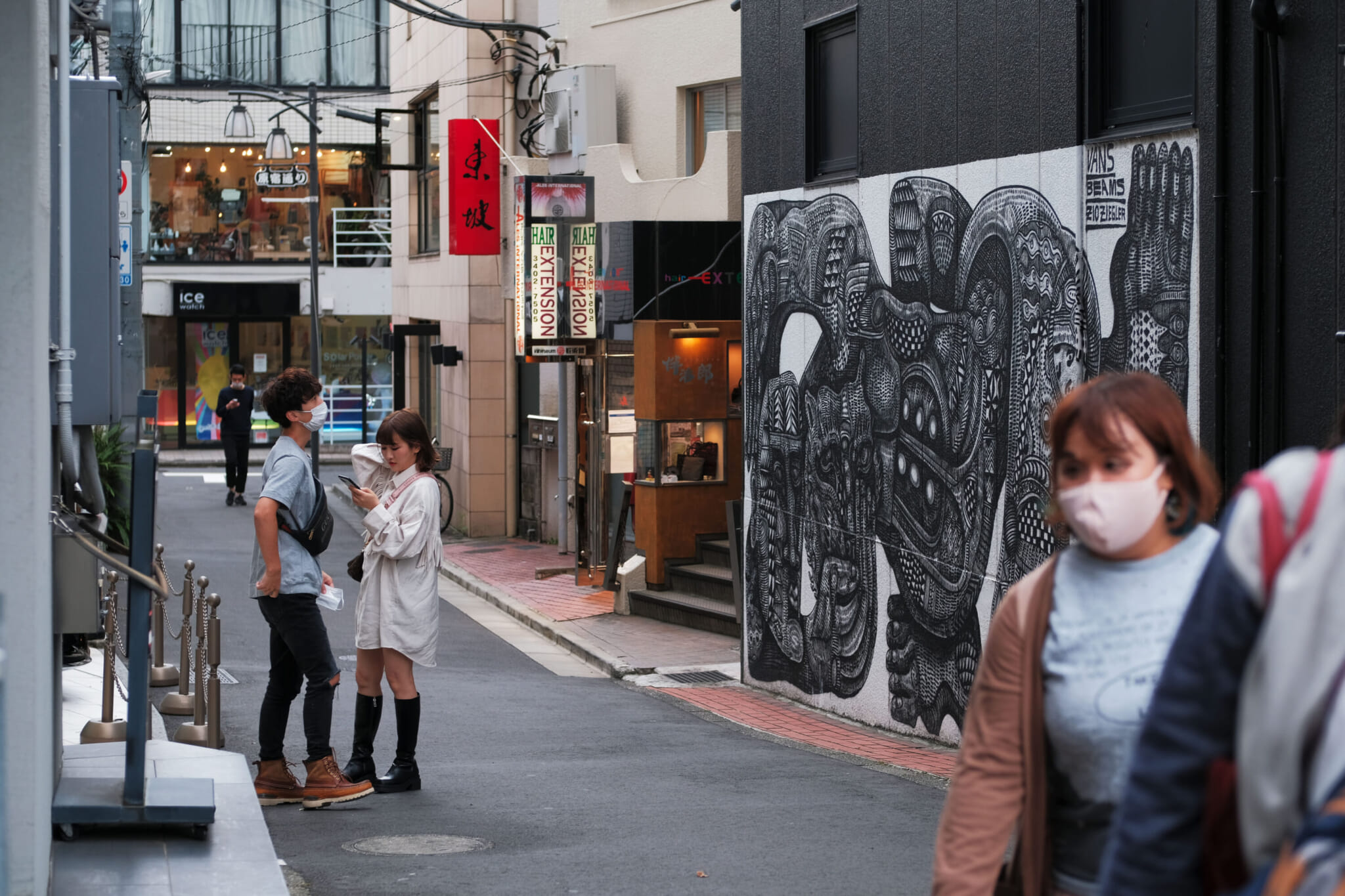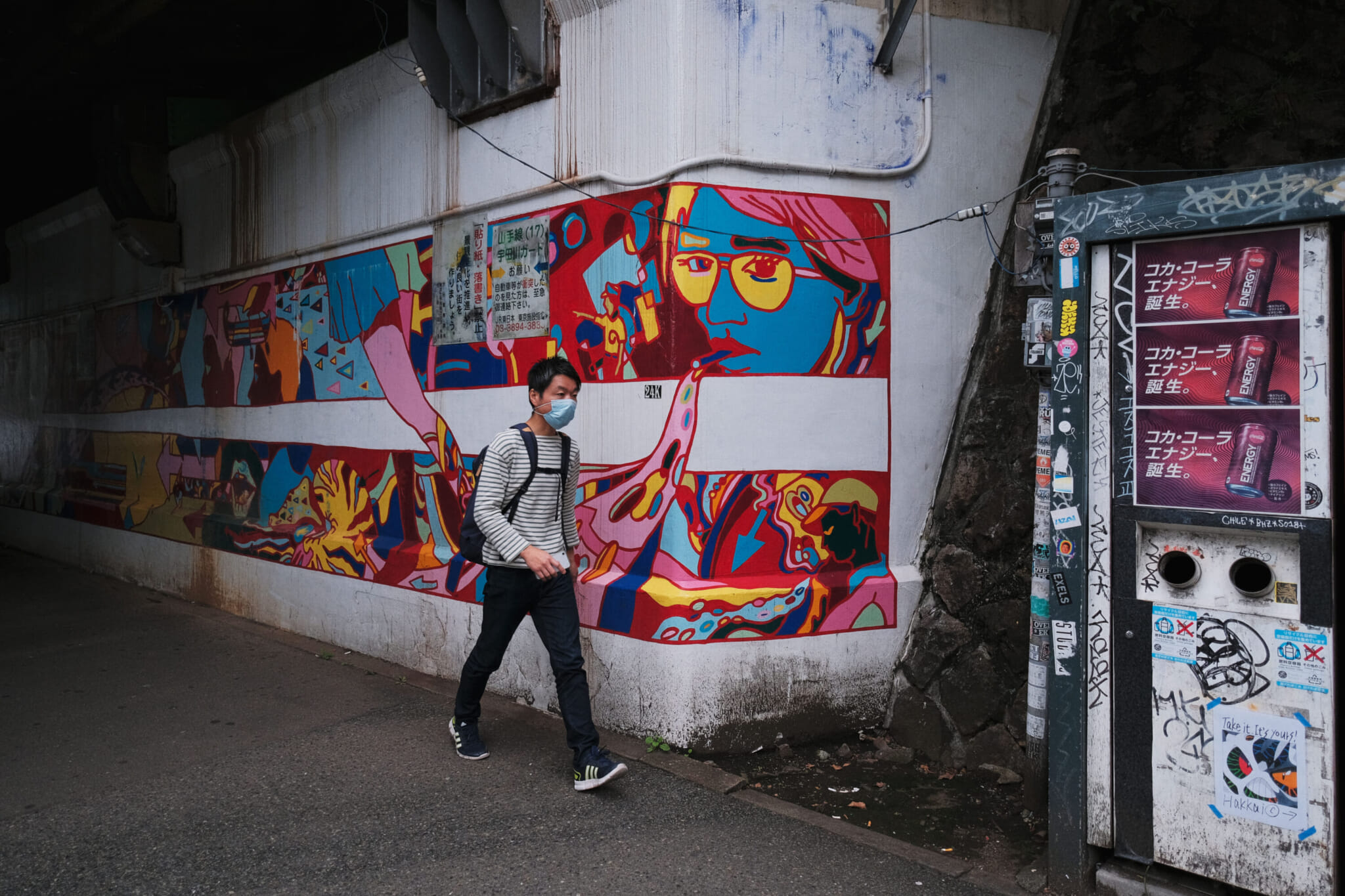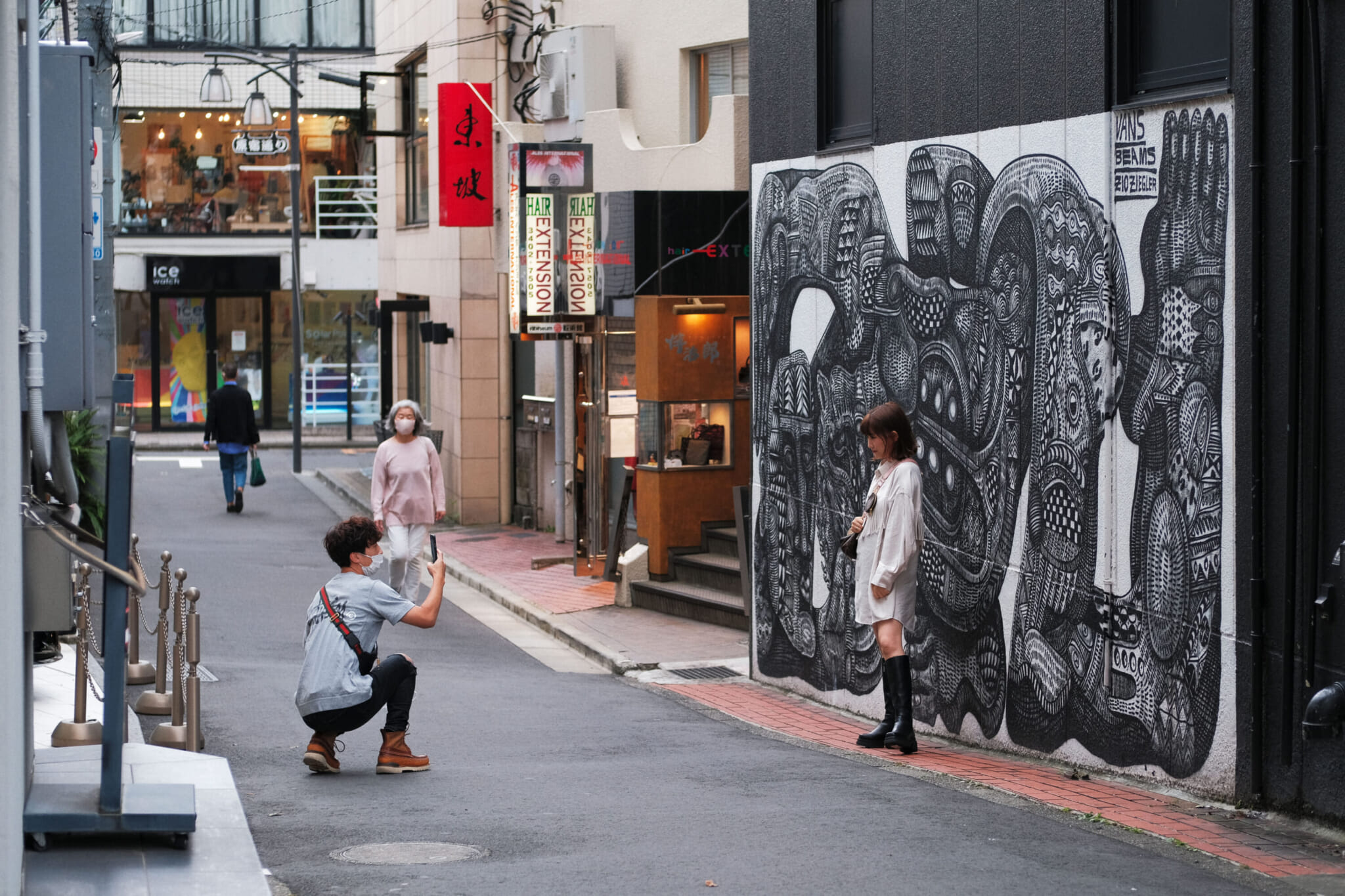I arrived fresh-faced in Tokyo in the spring of 2000 without any knowledge of the language or culture at all. What I did have, though, was a deep desire to have an experience which would in some way change my life and possibly usher me into a new world and a new direction. A week after arriving in the capital, I had my company training in Harajuku. That changed everything. After the monotonous course, my new pals and I (including my good friends Sam and Fiona) headed to a bar at the top of Omotesando, which had a projector showing movies. We consumed beers and highballs while watching a procession of young women in miniskirts handing out Lark cigarettes for free. Harajuku, at that time, was an unintelligible wonderland.
What I didn’t know then, however, was Harajuku was possibly the coolest place on earth. For my next visit, I swished through the station gates at the Takeshita Dori exit and soon saw a young Japanese man with a cape and fake blood dripping from his mouth, followed by a girl that looked like Alice in Wonderland. There were then an array of kids that were, as we say now, cosplaying.

A New Career
A wander around near Yoyogi Park and things revealed themselves very quickly. This was a public exhibition space, a zone where anyone could transform and be anyone they desired. I was immediately sold. I reached out to Dutchman Kjeld Duits who ran a website called Japanese Streets (at the time, in the early 2000s, it was one of the most popular street fashion sites in the world). I asked if I could write for the site. If I hadn’t done that, then I wouldn’t be writing here, or at all.
Kjeld, a highly experienced and respected Dutch journalist and photographer, took me under his wing and I gained invaluable experience as a writer and an observer of fashion. He was a true senpai and mentor to me. He still is. We attended fashion week together in Harajuku and nearby areas. Through this work, I was asked to contribute to The Japan Times as a fashion columnist, where I worked alongside one of the country’s most important voices in fashion, Misha Janette. There’s a valuable lesson somewhere in there for young and aspiring writers.
I usually walk into Harajuku from Ikebukuro, which is very easy indeed. A straight line along Meiji Dori which leads you through Takadanobaba, Okubo, Yoyogi, then onto the outskirts of Harajuku. As you walk into Harajuku, this way, the atmosphere begins to build as the throngs grow, the tourists increase and the number of retail options multiply before your eyes.
On this side of Harajuku, right at the end of Cat Street and behind Meiji Dori, is Japan’s first Lewis Leathers store, a giant of English fashion and one of the world’s most sought-after and high-end leather jacket stores. One of my close friends, Lloyd, was responsible for the beautiful, handcrafted interiors and I watched, transfixed, as the store took shape over a few months.
It was, even when I arrived in Tokyo, a vibrant and exciting place where public telephone booths would be the location to transform high schoolers into Lolita, Goth-Loli or Fairy-kei personas. What I learned from Kjeld, who had studied cosplay for years beforehand, was that many youngsters didn’t actually belong to one group. They would change their clothing and outlook depending on their moods. One week Lolita and the next Fairy-kei. The foreign press who wanted to blow up the area for their own reasons fundamentally got it wrong. There weren’t individual tribes or zoku but individuals who, at that time, dabbled with various kei or looks depending on their whims.

The End of an Era
Things have changed now and the backstreets which were once a hotbed of creativity and rebellion have been commercialized. The Dojunkai Artist Apartments which sat proudly on Omotesando, were according to Space Design, “established as a reconstruction support initiative after the 1923 Great Kanto Earthquake that aimed to provide unburnable steel-reinforced concrete housing. Dojukan’s apartments were the first steel-reinforced concrete facilities to ever appear in Japan and thus retained enormous value.” Unfortunately, they were later turned into the soulless Omotesando Hills.
When I walk past Omotesando Hills now, I can still feel and hear the atmosphere and voices from the past. It reminds me of my grandfather, a postman in Glasgow, a true autodidact, who studied advanced mathematics and cherished learning. When he died at the age of 59, my father found a piece of paper in his trouser pocket with a poem by Welshman Dylan Thomas. This, of course, may or may not be true. My memory isn’t always reliable.
And you, my father, there on the sad height,
Curse, bless, me now with your fierce tears, I pray.
Do not go gentle into that good night.
Rage, rage against the dying of the light.
And I somehow knew, growing up, that I would respect these words and rage against the injustices in the world, like tearing down a crucial part of Tokyo’s history for capitalistic gain. And from my grandfather and parents, I fundamentally learned that studying and reading makes you smart, regardless of your background, accent or social status. My beautiful late mother pushed hard towards my brother and me to escape and further ourselves no matter what.
Harajuku, as I walked through it 23 years ago, was creative, rebellious and subversive. From Takeshita Dori to Cat Street and even onto the main drag of Omotesando there were vintage stores, art supply shops and apparel made specifically for the area’s patrons. Tokyo fashion legend Baby Mary’s Faline, 6% Doki Doki and Grimoire all became trusted brands and stores in and around Harajuku. They were safe havens for like-minded people.
However, the most beautiful memories of this area come from Yoyogi Park, which sits neatly behind Harajuku Station. I used to go there after work with my close friend, and all-around beautiful soul, Lisa, who I have known for nearly 20 years. She would listen, drink and advise with such gentleness and care that I couldn’t quite imagine Tokyo without her. Her husband, Jules, is also a very special human being. A real friend, a person who you really need in your life.
We, with various friends over the years, commandeered parts of the park, playing music on our mobile speakers, drinking until dark and setting the world to rights. Sunsets, blue tarpaulin, cans of mysterious drinks, dirty laughs and then walking down Omotesando afterwards searching for a final resting place to finish off the night. Everyone should have a Lisa and Jules in their life. I feel extremely blessed to have them and several other close friends.

Enchanting Memories
I’ve attended fashion shows at the iconic Laforet, I’ve shopped at the old and iconic Gap which is now Tokyu Plaza and watched my pal Stuart buy a terrible tank top. It was the early noughties after all. I’ve seen Shoichi Aoki and Rei Shito, two of the most important Japanese street fashion photographers, set up shoots with fashionable youngsters on the streets.
I’ve seen Nigo, Hiroshi Fujiwara and other streetwear legends navigate themselves through the backstreets of the area, commonly known as ura-Hara, and watched as Devon Aoki, Tyler Brule, Justin Bieber and Jack Dorsey saunter down, unrecognized, the main boulevard. It’s a location where you can be yourself, find your spot, your space and be comfortable in your own skin, as, to be honest, nobody here really cares who you are.
I’ve interviewed designers and architects in the area. I accompanied my wife as she was pregnant with my beautiful daughter as we walked up towards Harajuku Station looking for a yakiniku spot as she was craving grilled meat, absolutely glowing as she shined under the Christmas neon decorations.
I’ve taken my daughter to art galleries here, introduced her to the amazing Swedish photographer Jorgen Axelvall at his show at Bookmarc and bought her ice cream and watched proudly as she strolled down the main streets without a care in the world. These are my images of Harajuku. It has morphed from a busy, independent old-school area to a bustling hymn to capitalism but, somehow, still manages to maintain a modicum of its charm, its allure and its name as one of Tokyo’s most visited and most imagined districts.
Updated On May 2, 2023








